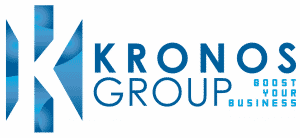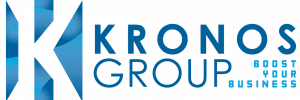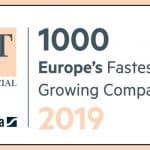What is mobile procurement and how can it be leveraged in modern business practices?

Summary
Implementing agile and accessible procurement systems is crucial for businesses aiming to streamline processes and enhance efficiency. In this blog, we divulge the key features and benefits of mobile procurement and how processes are streamlined and enhanced. The process begins with leveraging the mobile procurement strategy and aligning it with overall business objectives and ends with constantly monitoring the procurement process. Integrating mobile procurement into a business model involves assessing several factors such as the current processes, defining objectives, and selecting a compatible solution.
Mobile procurement refers to the process of purchasing goods and services using mobile devices such as smartphones and tablets. This approach leverages mobile technology to streamline and enhance stages of the procurement cycle, including requisition, approval, purchase order creation, and payment.
Key features and benefits of mobile-enabled procurement include:
- Accessibility
Users can access procurement systems and processes from anywhere, at any time. This flexibility allows for quicker decision-making and responsiveness.
- Efficiency
Faster approval workflows and reduced delays associated with traditional paper-based processes, leading to improved efficiency and overall productivity.
- Real-time updates
Receive real-time notifications and updates on the status of procurement activities, enabling tracking, visibility, and management of the entire process.
- User-friendly interfaces
User-friendly interfaces are designed for smaller screens, making it easier for users to navigate through the procurement system on their mobile devices.
- Integration with other systems
Mobile-based procurement applications integrate with other enterprise systems which ensures seamless data flow and improves reliability, and consistency.
- Cost optimisation
By streamlining processes and reducing manual efforts, mobile-based procurement can contribute to cost savings in terms of time and resource optimisation.
- Compliance and security
Security features and compliance measures that can be used to ensure that the procurement process adheres to organisational policies and regulations.
- Data analytics
Analytics features that provide insights into spending patterns and supplier performance, which can prove valuable for strategic decision-making.
Mobile-based procurement solutions aim to make the procurement process more agile, transparent, and accessible, contributing to the overall efficiency of an organisation’s supply chain management.
How can mobile procurement be leveraged in business models?
Integrating mobile procurement into your business model involves a structured approach to ensure a smooth transition and effective usage.
Here are steps you can take to start utilising mobile-based procurement in your business:
Assess your current procurement process
Understand your existing procurement processes, workflows, and pain points and identify areas where mobile technology can be integrated to improve efficiency and accessibility.
Define objectives and goals
Defining your objectives, such as reducing processing time, improving approval cycles, or increasing overall efficiency, is important as this provides goals to work towards.
Select the right mobile solution
Research and choose a procurement solution that aligns with your business strategic objectives and binds well with your existing systems, software tools, and processes.
Customise for your business needs
Customise a procurement solution to match your business requirements. Ensure that the solution aligns with your business objectives, industry regulations, and compliance standards.
Provide training and development
Train your staff on how to adapt to the use of procurement applications. Emphasise benefits and functionalities to encourage the adoption of the system with stakeholders.
Implement a change management strategy
Communicate the changes in your procurement system to stakeholders, establish a framework to address concerns, and highlight the positive impact on efficiency and productivity.
Ensure compliance and data security
Implement security measures to protect sensitive procurement information and ensure that the procurement solution complies with applicable regulations and industry standards.
Integrate with existing systems
Seamless integration with your existing enterprise systems such as ERP, finance, and inventory management, which will maintain consistency and accuracy of data organisation.
Pilot testing and gathering feedback
Conduct a pilot test with stakeholders to address issues before the full commencement and deployment of the procurement strategy. Gather feedback to make process modifications.
Monitoring and optimising
Continuously monitor the performance of the procurement system. This requires the collection and analysis of data to identify areas for improvement and process optimisation.
Encourage user adoption
Foster a workforce culture of procurement adoption within your organisation and recognise and reward stakeholders who embrace and excel in utilising the newly implemented system.
Running regular updates and upgrades
Stay up-to-date about updates and upgrades to the procurement solution efficiently and reliably. Keep the procurement process informed with new features and security enhancements.
Following these steps will allow the organisation to gradually benefit from improved efficiency, accessibility, and transparency in its procurement processes.
What are the factors to consider when implementing agile procurement systems?
Implementing procurement software is a strategic decision made by businesses since it revolutionises processes and revamps process workflows.
These are the factors that businesses must keep in mind when considering agile and accessible procurement software:
Organisational objectives
The mobile-based procurement strategy must align with overall business and strategic objectives. A clear definition of goals aims to achieve cost savings, efficiency improvements, or enhanced data accuracy.
User needs and experience
Understanding the needs of stakeholders involved in the procurement process and choosing a procurement solution that provides a user-friendly interface and a positive user experience to encourage adoption.
Integration with existing systems
It is important to assess the integration capabilities of the procurement solution with your existing enterprise systems as this ensures seamless integration and data consistency, and reduces manual data entry.
Security and compliance
Prioritise data security and compliance with industry regulations and ensure that the procurement solution employs robust security measures, including encryption, authentication, and authorisation protocols.
Scalability
Choosing a procurement solution that can scale with business growth and consider future needs ensures that the solution can accommodate an increasing number of stakeholders, transactions, and data volumes.
Training and change management
Training programmes are important when considering new workflows to educate and inform. Implementing a change management strategy to address resistance and foster a positive attitude towards technology is vital.
Costs and ROI
Evaluating the total cost of ownership, implementation, and maintenance and calculating the ROI to determine the financial benefits of implementing an agile procurement strategy is an essential consideration.
Customisation and flexibility
Choose a procurement solution that can be customised to meet your specific business requirements and assess the flexibility of the system to accommodate changes in procurement processes and workflows.
Mobile device management (MDM)
Implementing MDM solutions ensures the security and management of mobile devices used in the procurement process and helps enforce security policies, track devices, and remotely manage configurations.
Analytics and reporting
Selecting a mobile-enabled procurement solution provides robust analytics and reporting capabilities and access to real-time data and insights—assisting in making informed decisions and optimising processes.
Supplier collaboration
Make sure features that facilitate collaboration with suppliers through supplier portals and communication tools that can improve transparency, visibility, and efficiency within the supply chain are available.
Support and maintenance
Assess the level of support and maintenance offered by the system provider. A responsive support system ensures the timely resolution of issues and minimises disruptions within the procurement process.
Mobile procurement processes are the gateway for digital transformation
In the initial stages, stakeholders may be resistant to change. However, with the increased focus being placed on process simplification, it is important to normalise the adoption of convenient and less manual processes these can lead to inefficiencies, inaccuracies, and losses.
In today’s business landscape, characterised by processes streamlined through automation, organisations must contemplate digital transformation initiatives to enhance operations and secure a competitive advantage in the market. Mobile procurement has proven to be an effective initiative in this endeavour.




